 JP /EN
JP /EN



Re-Earth method is a soil
pavement material
that solves the disadvantages
of soil and adds weed prevention effects
while taking advantage of
soil's excellent characteristics,
such as water permeability,
water retention, and heat insulation.
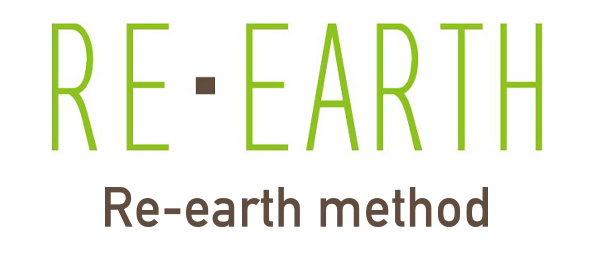

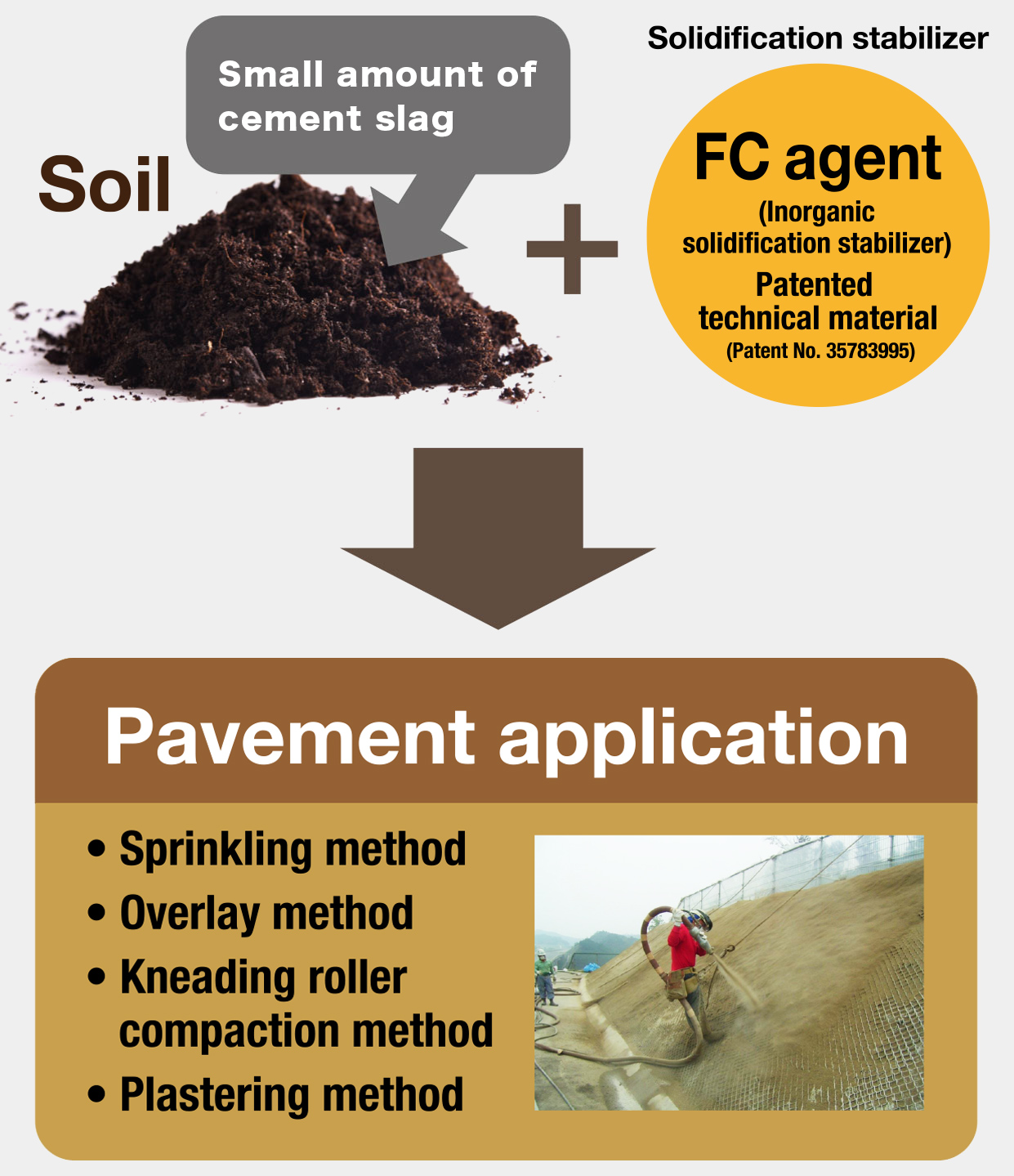
Re-earth method is a method that utilizes the characteristics of soil by mixing a small amount of cement slag with a solidification stabilizer called "FC agent (patented technical material)" in "soil" to create a soil pavement material. It realizes an environmentally friendly pavement surface such as prevention of global warming, weed control, and harmony with the landscape that cannot be achieved with asphalt pavement.
By making multiple inorganic compounds into an aqueous solution, alkali metals and bases activate ionization reaction and smoothly bond with the ions contained in the soil. In this process, unstable ions of organic compounds [hydroxyl group (R.OH) (R.COOH), carboxylic acid group, humic acid, etc.] are repelled from the aqueous solution, so inorganic ions are stabilized.
Demonstrated increased
durability with FC agent
Compressive strength test results (at a material age of 28 days) show superior compressive strength compared to ordinary concrete.
Research organization: Japan Testing Center for Construction Materials
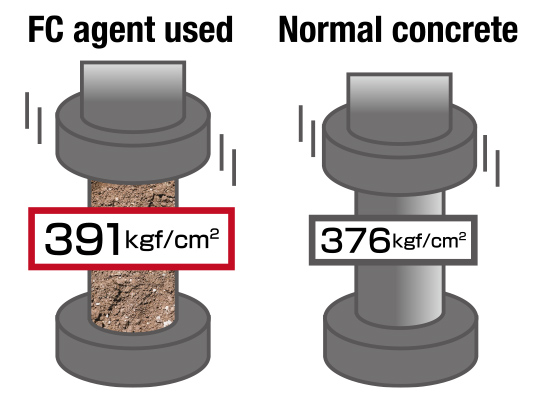

Fire decomposed granite soil for weed control, remove organic substances and microorganisms in the soil, and just add water with a premix of FC agent and cement.
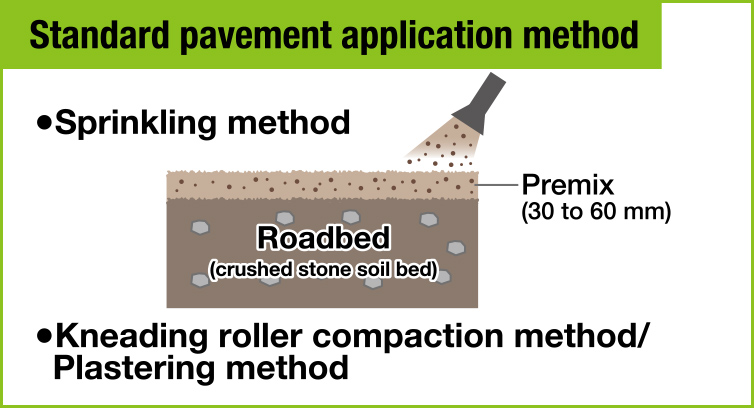
Hard soil containing inorganic solidification stabilizer (FC agent) is a type of soil pavement material that is kneaded on foundations such as concrete or mortar (plastering method).
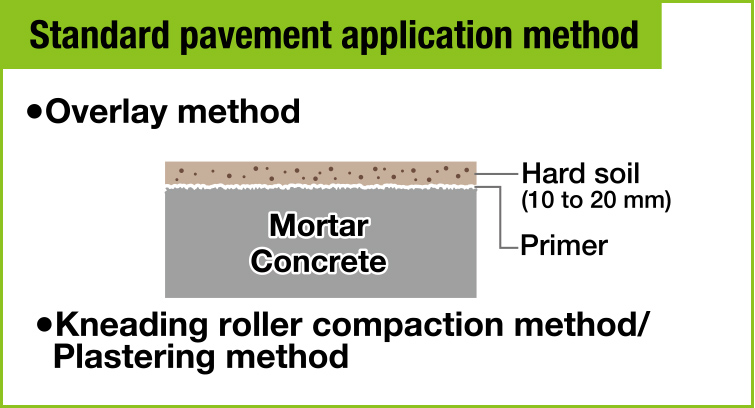

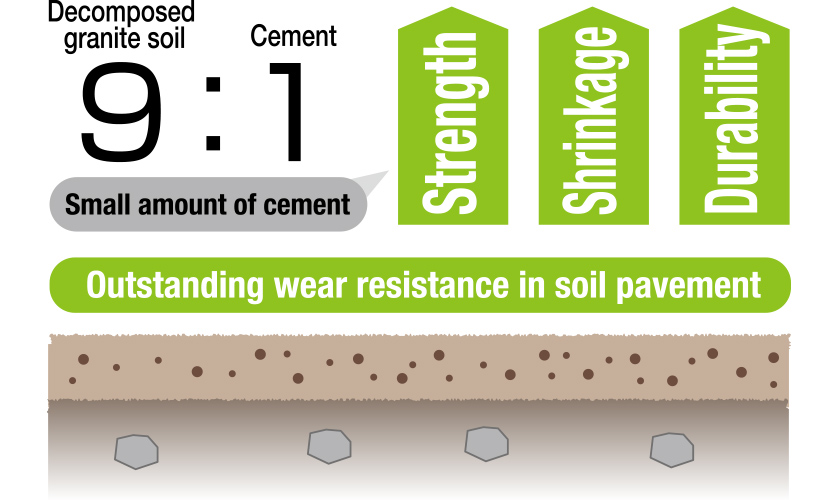
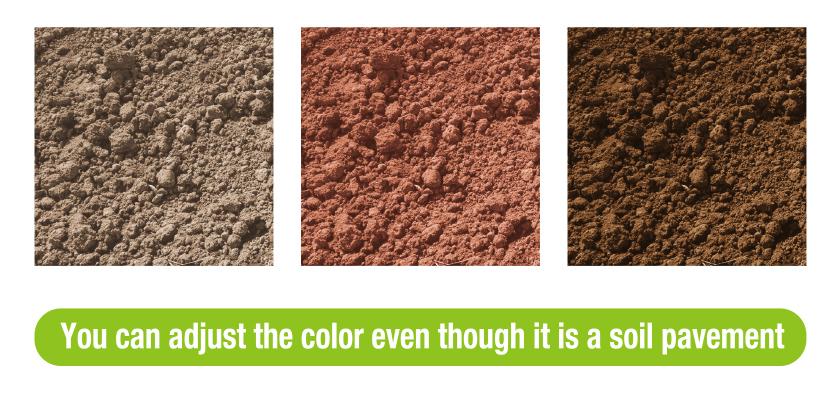

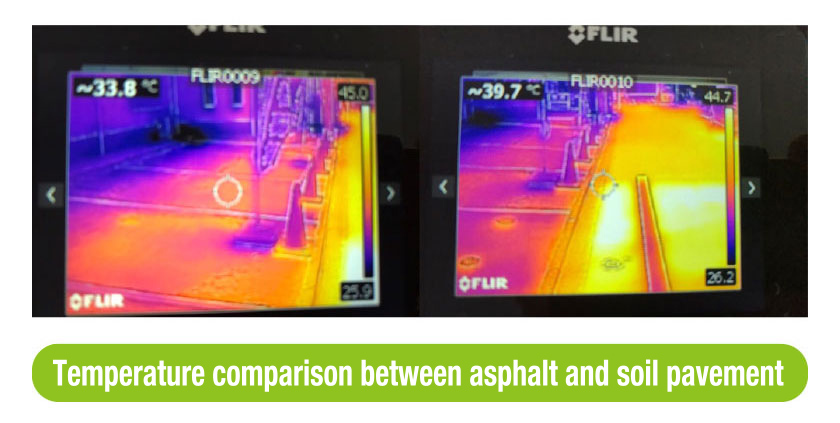
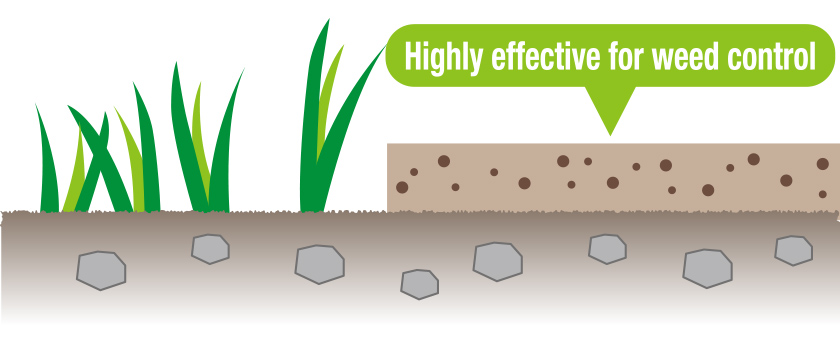


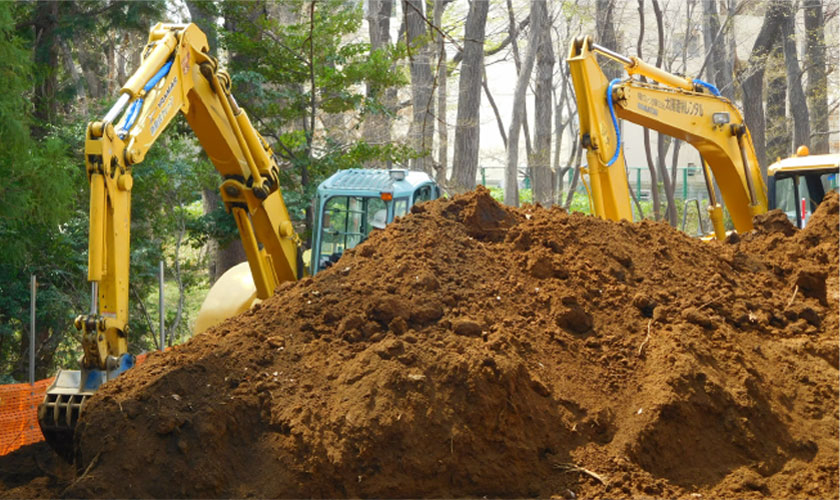
“Soil" to maintain weed suppression effect for 30 years on slopes of roads, highways, median strips, etc., slopes of rivers, tracks, etc., slopes of steep slopes and water source areas, and facilities such as public housing complexes is a material that is more durable and less expensive than conventional mowing method, which is “weed prevention sheet”, and can coexist with the natural environment.
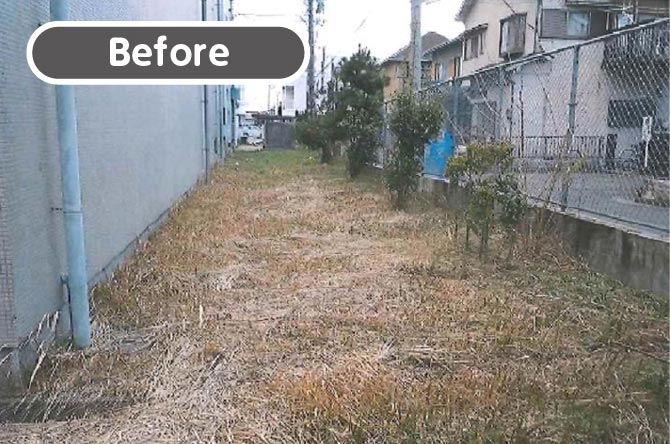
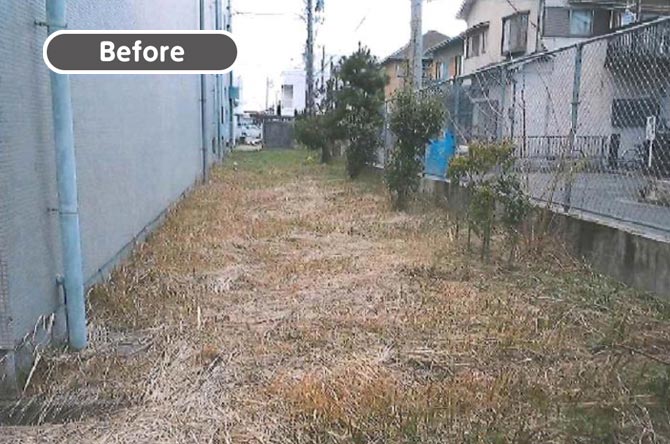

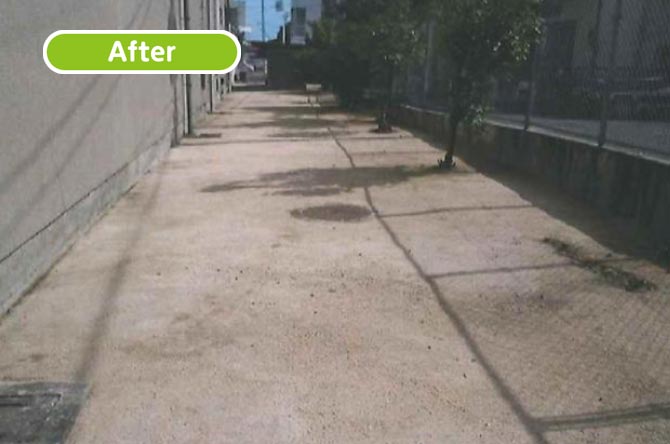
Since the soil is stabilized in an aggregated structure (sandy condition), it has excellent water retention and permeability.
You can develop it as a new material for applications such as cushion sand substitute for interlocking block, agricultural water retention sand (fertilizer impregnated base material), artificial turf roadbed material, building and civil engineering material (aggregate), plastering material, landscaping material, etc.

Premix spraying method
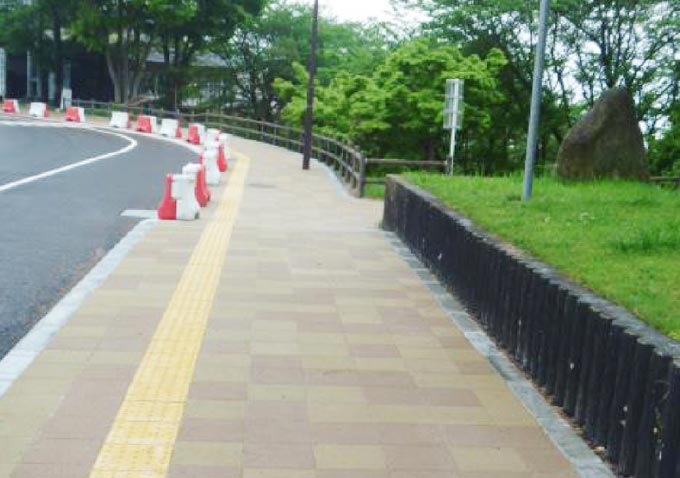
Block pavement
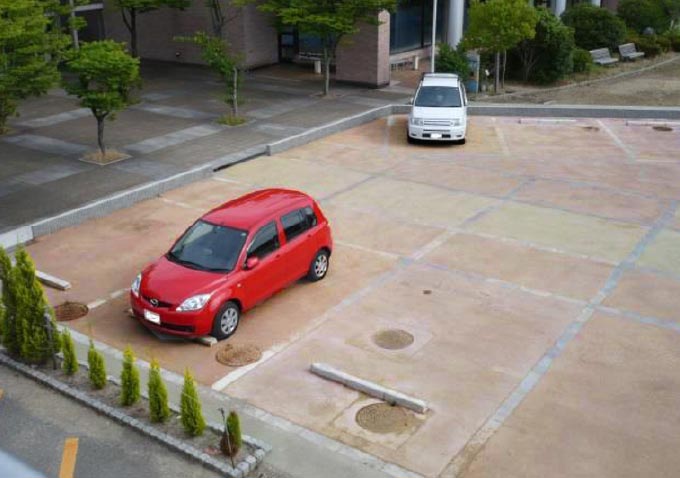
Parking lot
You can develop the use of the soil by combining soil generated from pavement application with other inorganic aggregates such as construction by-products (fly ash, granulated slag, waste tiles, waste brick, waste roof tiles, sand).
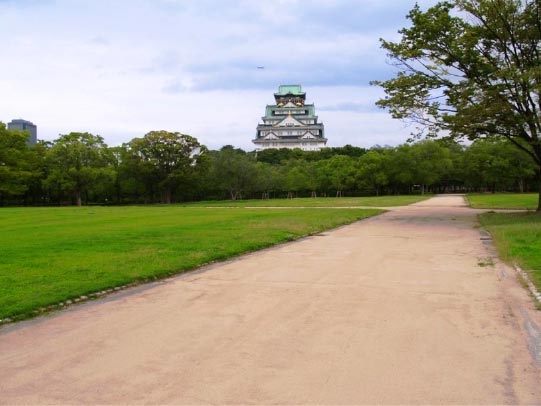
Promenade in Osaka Castle Park
In the "Study on environmentally friendly sidewalk pavement (PJ Masaru Yamada, Professor Emeritus, Osaka City University, Masanori Sano, Kinki University: 2013-2015)” at Research Committee on Technological Development for Infrastructure, it was verified as a sidewalk pavement material in industry-government-academia.
The pavements (environmental pavements) are paved with consideration for environmental preservation and improvement, not only in terms of vehicle mobility and safety, but also in terms of sound and vibration reduction, suppression of road surface temperature rise, and rainwater storage and permeation. This environmental pavement is expected to become even more widely used in sidewalks, parking lots, and slopes.In any pavement, strength, durability, and economy are required according to the conditions of the application site. In this research, we examine evaluation methods for environmental performance, strength, and durability of various construction methods and materials that can be applied to pavements for sidewalks, etc., and make a proposal for necessary performance according to the conditions of the application site.

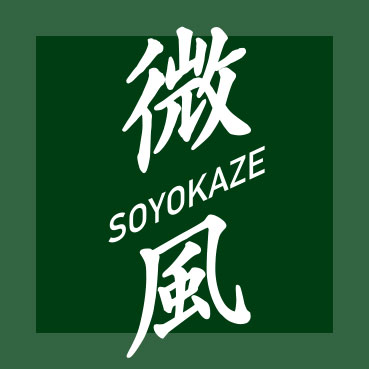
(white bamboo charcoal)
Bamboo charcoal and zeolite are natural materials that have been confirmed to deodorize, control humidity, and purify air. As a result of research, we have succeeded in producing "white bamboo charcoal," instead of generally black bamboo charcoal, and have realized a 100% natural wall material.
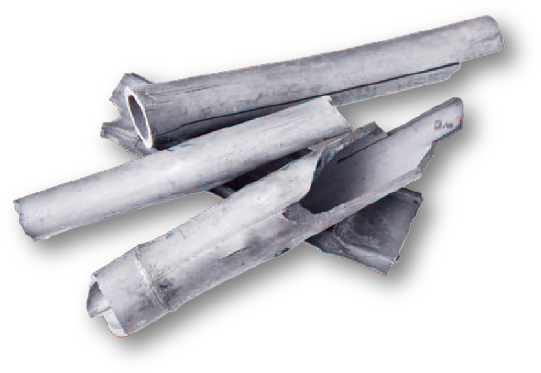
It is effective for chemicals such as formaldehyde, ammonia, toluene, and xylene.
The porosity of Soyokaze absorbs and discharges moisture and maintains moderate humidity inside the building, preventing condensation, mold growth, and pest breeding.
It continuously absorbs odors from airborne cigarettes, pets, toilets, furniture, etc.
"Soyokaze" does not use harmful substances in its materials or bonding methods, so it is safe and secure!
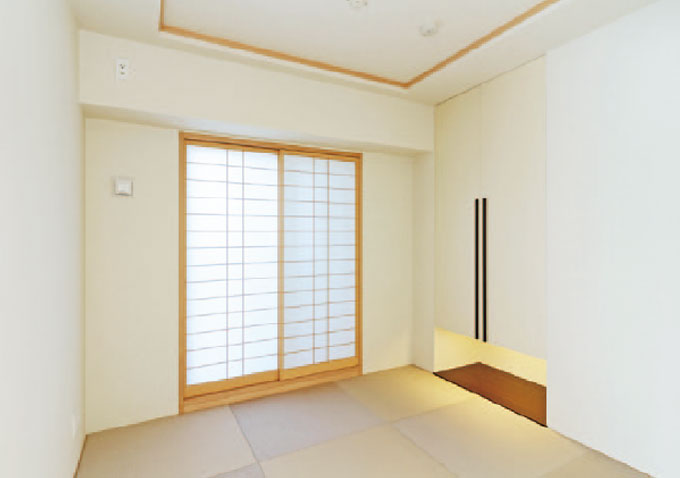
Japanese style room
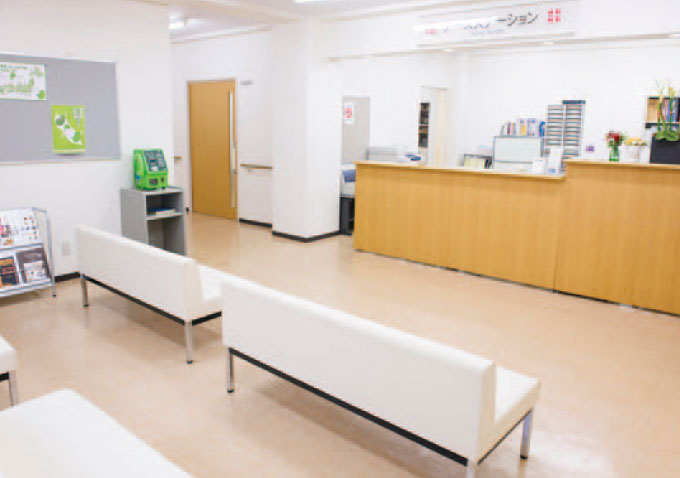
For hospitals, nursing homes and hotels

For stores such as beauty salons and restaurants

Combining Opeth's advanced photocatalyst coating minacoatⓇ with Soyokaze, the humidity control and deodorant effect of Soyokaze and the effect of minacoatⓇ make it possible to create an anti-viral, anti-bacterial, and anti-fouling coating.
